In the ever-evolving landscape of kitchen appliances, the role of OEM manufacturers has become increasingly pivotal. These companies, often unseen by the end consumer, play a crucial behind-the-scenes role in shaping the products that end up on store shelves. Understanding the intricacies of these partnerships can provide valuable insights into the future of the industry and the importance of selecting the right OEM partner.
Understanding the Role of an OEM Kitchen Appliances Manufacturer
An OEM kitchen appliances manufacturer plays a pivotal role in the industry, acting as the behind-the-scenes hero that powers the consumer market. These companies specialize in producing custom kitchen appliances for other businesses to brand and sell under their own names. Understanding this role involves recognizing the intricate process and the value they bring to the table.
These manufacturers are the artisans of the appliance world, crafting products that are not only functional but also meet the unique specifications of their clients. They take raw materials and transform them into cutting-edge kitchen gadgets that cater to the ever-evolving demands of consumers. Whether it’s a sleek stove, a high-efficiency dishwasher, or a sophisticated refrigerator, OEM manufacturers are the architects of these must-have items.
One of the key responsibilities of an OEM manufacturer is to ensure that the products they create align with the brand identity of their clients. This means that every aspect of the appliance, from the design to the functionality, reflects the values and aesthetic of the company that will be selling it. It’s a delicate balance between creating a product that is attractive to consumers and maintaining the integrity of the brand.
The role of an OEM manufacturer is multifaceted. They are not just manufacturers; they are strategic partners. They need to understand the market trends, consumer behavior, and the latest technological advancements to create appliances that are both innovative and in demand. This requires a keen eye for detail and the ability to anticipate future needs.
In addition to design and innovation, OEM manufacturers are experts in supply chain management. They source the highest quality components from trusted suppliers, ensuring that the final product is not only efficient and reliable but also cost-effective. This includes managing logistics, quality control, and compliance with various standards and regulations.
Quality assurance is a cornerstone of the OEM manufacturing process. These companies employ rigorous testing protocols to guarantee that each appliance meets the highest industry standards. This not only ensures customer satisfaction but also helps to build trust and credibility for the brands that use these appliances.
The design phase is where the OEM manufacturer truly shines. They work closely with their clients to translate brand values into tangible products. This collaboration often involves extensive research and development to create appliances that are not only beautiful but also user-friendly. The design process is a blend of art and science, where form and function coexist harmoniously.
Customization is another key aspect of an OEM manufacturer’s role. They understand that every client has unique needs and requirements. Whether it’s a specific size, color, or feature, OEM manufacturers can tailor their products to meet these demands. This level of flexibility allows businesses to offer a range of options to their customers, catering to diverse tastes and preferences.
Once the design is finalized and the manufacturing process begins, the OEM manufacturer is responsible for overseeing every stage of production. This includes maintaining high-quality standards, ensuring timely delivery, and managing inventory. They act as a one-stop-shop for all production needs, taking care of everything from assembly to packaging.
In the competitive landscape of the kitchen appliances industry, OEM manufacturers also play a crucial role in supporting brand development. They help their clients stand out in a crowded market by providing innovative and high-quality products. This partnership can lead to increased market share and a stronger brand presence.
Environmental sustainability is also a vital aspect that OEM manufacturers consider. They are increasingly adopting green practices and sourcing eco-friendly materials to reduce their environmental impact. This not only aligns with consumer values but also positions brands as responsible corporate citizens.
As the kitchen appliances industry continues to evolve, the role of an OEM manufacturer becomes even more significant. They are at the forefront of technological advancements, constantly seeking ways to improve efficiency, durability, and user experience. The future of kitchen appliances lies in the hands of these innovative producers, who are committed to pushing the boundaries of what’s possible.
In summary, an OEM kitchen appliances manufacturer is more than just a producer of goods. They are strategic partners, designers, engineers, and sustainability advocates, all rolled into one. Their role is to bring the best of what technology has to offer to the market, ensuring that consumers receive top-quality products that are as unique as the brands that sell them.
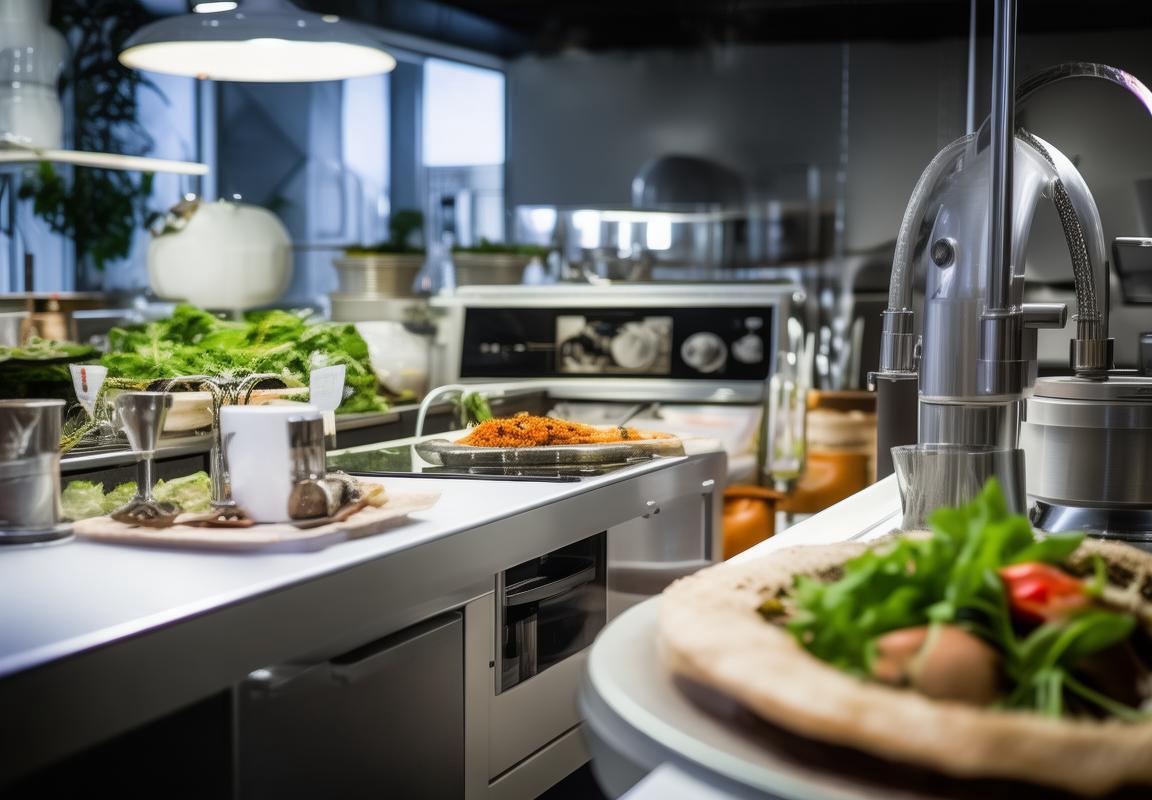
What is OEM in the Kitchen Appliances Industry?
OEM, or Original Equipment Manufacturer, is a term that plays a pivotal role in the kitchen appliances industry. It refers to a business model where a company, known as the OEM, produces goods that are then branded and sold under another company’s name. This concept is not limited to kitchen appliances; it’s a widespread practice across various industries. Let’s delve deeper into what this means in the context of kitchen appliances.
In the realm of kitchen appliances, OEMs are essentially the backbone of the production process. They take raw materials and components, which are then assembled into functional appliances like refrigerators, dishwashers, and ovens. These appliances are not sold under the OEM’s own brand; instead, they are customized to meet the specific requirements and branding guidelines of the client company, often a retailer or a brand that has a direct relationship with consumers.
The beauty of the OEM model lies in its flexibility. It allows companies to focus on their core competencies, such as marketing and distribution, while leaving the manufacturing to experts. This division of labor can lead to more efficient operations and a quicker time to market for new products. For example, a company that specializes in kitchen design and retail might not have the expertise or capacity to manufacture their own appliances. By partnering with an OEM, they can ensure that the appliances they sell are of high quality and meet the standards their customers expect.
When it comes to kitchen appliances, the term “original” can be a bit misleading. It doesn’t necessarily mean that the OEM is creating entirely new products from scratch. Often, they are taking existing designs and modifying them to fit the client’s needs. This could involve adjusting the size, color, features, or even the internal components to enhance performance or energy efficiency.
One of the key advantages of working with an OEM in the kitchen appliances industry is the ability to tailor products to market trends. As consumer preferences evolve, OEMs can quickly adapt and produce appliances that are in demand. This agility is particularly valuable in a sector where innovation is a constant drive, with new technologies emerging regularly.
Another aspect of OEM partnerships is the control over intellectual property. Since the products are not sold under the OEM’s brand, the client company retains the rights to their designs and branding. This means they can maintain a consistent look and feel across their product line, which is crucial for brand recognition and customer loyalty.
The relationship between an OEM and a client can take many forms. Some OEMs work exclusively with one client, creating a dedicated line of products that align perfectly with that client’s brand identity. Others operate as a one-stop-shop for multiple clients, offering a range of customizable appliances that can be adapted to various branding requirements.
When selecting an OEM partner, the client company must consider several factors. Quality control is paramount, as the reputation of the brand is at stake. The OEM must demonstrate a commitment to producing high-quality appliances that meet safety standards and industry regulations.
Additionally, the OEM’s capacity to handle large volumes is crucial. The kitchen appliances industry often requires manufacturers to produce in high quantities to meet market demands. An OEM that can scale up production without compromising quality is a valuable asset.
The level of customization also plays a significant role. Some OEMs offer a wide range of options for branding and design, while others may be more limited in their ability to tailor products. The client company should choose an OEM that aligns with its vision for product differentiation and market positioning.
Lastly, the OEM’s ability to innovate and stay ahead of technological advancements is vital. The kitchen appliances industry is constantly evolving, and an OEM that can integrate new features and functionalities into its products will be a step ahead of the competition.
In conclusion, OEMs in the kitchen appliances industry are integral to the production and branding process. They offer a flexible and efficient way for companies to bring high-quality products to market, tailored to their specific needs. Whether it’s adapting existing designs or creating new ones, the role of an OEM is to ensure that the final product aligns with the client’s brand and meets the expectations of consumers.
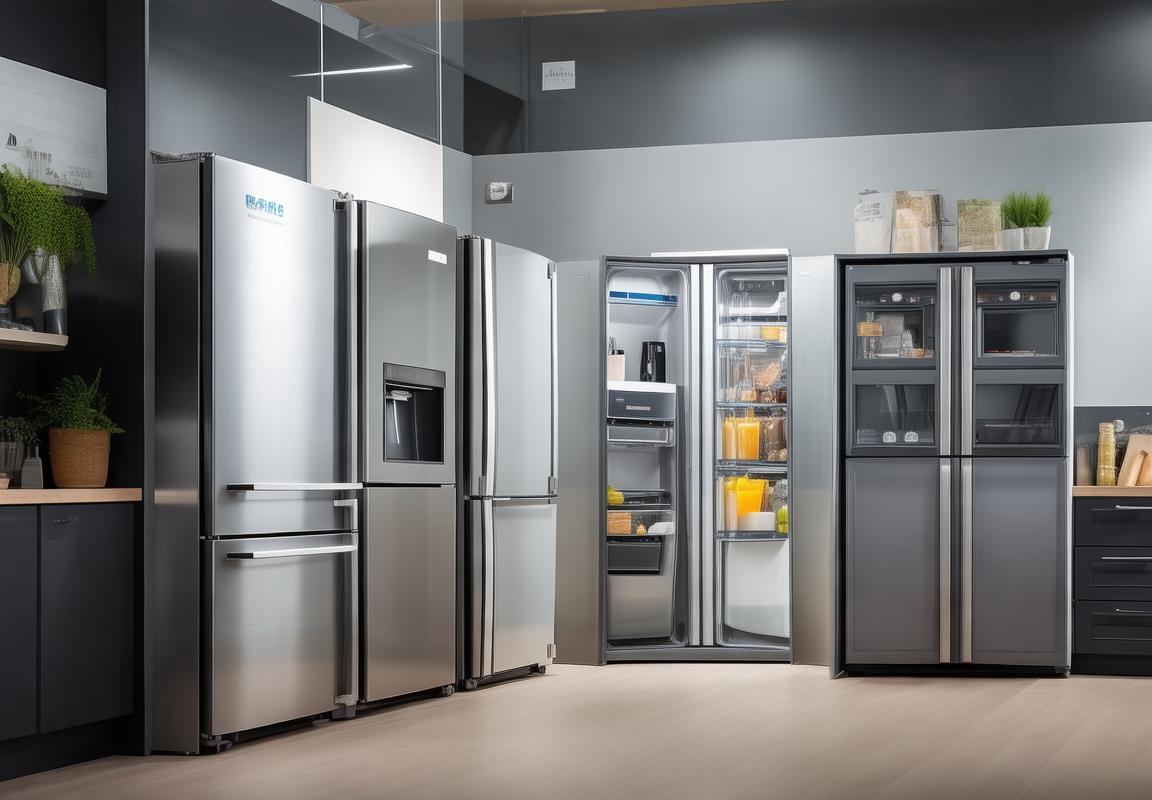
The Benefits of Partnering with an OEM Manufacturer
When it comes to the kitchen appliances industry, partnering with an Original Equipment Manufacturer (OEM) can offer a myriad of benefits that can significantly impact your business. From cost savings to quality control and brand growth, here’s how an OEM manufacturer can elevate your operations.
Enhanced Cost EfficiencyOEM manufacturers are typically large-scale producers, which means they have the advantage of bulk purchasing and production. This allows them to negotiate better deals with suppliers and spread out the costs of manufacturing over a large volume. By partnering with an OEM, businesses can benefit from these economies of scale, often resulting in lower unit costs for their kitchen appliances.
Customization and FlexibilityOne of the key advantages of working with an OEM is the ability to customize products to meet specific market demands or brand identities. OEMs can take a standard design and modify it to align with your brand’s aesthetic or functional requirements. This flexibility can be crucial for creating a unique selling proposition (USP) in a highly competitive market.
Expertise and ExperienceOEM manufacturers often have years, if not decades, of experience in designing and producing kitchen appliances. This accumulated knowledge and expertise can be invaluable to your business. They understand the latest trends, compliance standards, and best practices in the industry, ensuring that your products are not only up-to-date but also reliable and efficient.
Focus on Core CompetenciesBy outsourcing the production of kitchen appliances to an OEM, your business can concentrate on what it does best. This strategic decision allows you to leverage the manufacturer’s capabilities while your team focuses on sales, marketing, and customer service. It’s a win-win situation that can drive your business forward by improving overall efficiency.
Reduced Risk of ManufacturingDesigning and manufacturing kitchen appliances is a complex process with numerous potential pitfalls. From design flaws to production issues, the risks can be substantial. When you partner with an OEM, you shift much of this risk to the manufacturer, who has the infrastructure and expertise to handle such challenges. This can lead to a more stable supply chain and less stress on your internal resources.
Quick Turnaround and ScalabilityOEM manufacturers are often equipped to handle quick turnaround times, which is particularly beneficial for businesses that need to respond to market demands or seasonal trends. They can scale production up or down as needed, ensuring that you can meet fluctuating customer demands without the need to invest in additional facilities or equipment.
Global Reach and Market AccessMany OEM manufacturers have a global presence, which can open doors to new markets and distribution channels for your products. By leveraging their international connections, you can expand your reach without the need for significant investment in foreign operations or local expertise.
Continuous InnovationOEM manufacturers are often at the forefront of innovation, driven by the need to stay competitive and meet consumer expectations. This means that when you work with an OEM, you gain access to the latest technologies and design concepts, which can give you a competitive edge in the market.
Quality Control and TestingA reputable OEM manufacturer will have rigorous quality control processes in place. This includes testing at various stages of production to ensure that each appliance meets the highest standards. By outsourcing to such a manufacturer, you can be confident that your products will arrive at your customers’ homes in perfect condition.
Long-Term Strategic RelationshipsPartnering with an OEM can lead to the development of long-term strategic relationships. This can provide ongoing benefits such as priority access to new products, improved pricing, and even joint development opportunities, fostering a mutually beneficial partnership that can last for years.
ConclusionIn conclusion, the benefits of partnering with an OEM manufacturer in the kitchen appliances industry are numerous. From cost savings and customization to expertise and market access, the right OEM can be a powerful ally in your quest to succeed in a dynamic and demanding market. Whether you’re looking to enhance your product line, expand your operations, or simply streamline your production process, an OEM partnership could be the key to unlocking your business’s full potential.

Key Services Offered by OEM Kitchen Appliances Manufacturers
Navigating the complexities of kitchen appliance production can be daunting, especially for brands looking to enter the market or expand their product lines. That’s where OEM (Original Equipment Manufacturer) kitchen appliances manufacturers step in, offering a range of crucial services that can make a significant difference in the quality and success of your products. Here’s a closer look at some of the key services these manufacturers provide:
Customization and Design ExpertiseOEM manufacturers excel in tailoring appliances to meet the specific needs and brand identities of their clients. They offer design services that can range from minor modifications to complete custom builds, ensuring that each appliance not only functions efficiently but also aligns with the aesthetic and functional requirements of the brand.
State-of-the-Art Production FacilitiesOne of the primary advantages of working with an OEM is access to advanced production facilities. These manufacturers invest heavily in technology and equipment to ensure that every product is crafted with precision. This means you can rely on high-quality components and manufacturing processes that are up to date with the latest industry standards.
Component Sourcing and Quality ControlAn OEM kitchen appliances manufacturer takes care of sourcing all the necessary components for your product. They have established relationships with trusted suppliers to ensure the highest quality materials are used. Moreover, they maintain strict quality control measures throughout the production process to guarantee that each appliance meets or exceeds your standards.
Efficient Supply Chain ManagementManaging a supply chain can be challenging, but OEM manufacturers are adept at handling the complexities. They can provide just-in-time delivery, manage inventory levels, and ensure that your production schedule runs smoothly. This streamlined approach minimizes delays and keeps your business running efficiently.
Innovative Solutions for Energy EfficiencyWith the growing emphasis on sustainability, OEM manufacturers are at the forefront of developing energy-efficient kitchen appliances. They offer innovative solutions that not only help reduce energy consumption but also meet the environmental standards and expectations of today’s consumers.
Compliance and Certification SupportNavigating the regulatory landscape for kitchen appliances can be intricate. OEM manufacturers are well-versed in the necessary certifications and compliance requirements. They can assist with obtaining the appropriate approvals, such as Energy Star ratings, CE marks, and other regional standards, ensuring your products are market-ready.
Product Testing and ValidationBefore a kitchen appliance hits the shelves, it needs to undergo rigorous testing to ensure reliability and safety. OEM manufacturers offer comprehensive testing services, including durability, performance, and safety checks. This validation process is crucial for building consumer trust and confidence in your brand.
After-Sales Support and MaintenanceOnce your products are in the market, an OEM manufacturer can also provide after-sales support. This includes technical assistance, maintenance programs, and service parts availability. By offering this support, you can enhance customer satisfaction and loyalty.
Custom Packaging and Branding SolutionsThe way your products are packaged and presented can greatly impact their perceived value. OEM manufacturers can offer custom packaging solutions that not only protect your appliances during shipping but also align with your brand’s image and marketing strategy.
Continuous Improvement and InnovationThe kitchen appliance industry is dynamic, with constant innovation and technological advancements. OEM manufacturers are committed to staying ahead of these trends. They can provide insights into emerging technologies and help your brand innovate and evolve with the market.
Collaboration and Strategic DevelopmentBeyond the manufacturing process, OEM manufacturers can also serve as strategic partners. They can collaborate with your team to develop new product lines, optimize existing products, and even provide market research and analysis to inform your business decisions.
By leveraging these services, brands can focus on their core competencies while relying on the expertise and resources of an OEM manufacturer to bring high-quality kitchen appliances to market. The partnership can lead to a more streamlined production process, reduced costs, and a stronger competitive edge in the marketplace.

The Design and Customization Process
The design and customization process for OEM kitchen appliances is a meticulous journey that combines creativity, functionality, and the unique needs of the client. Here’s a closer look at how it unfolds:
Understanding the Brand IdentityThe process begins with a deep dive into the brand identity of the client. This involves studying the company’s mission, values, and the image they wish to project through their kitchen appliances. The OEM manufacturer works closely with the client to ensure that the design resonates with the brand’s essence and appeals to their target market.
Sketching and ConceptualizationOnce the brand identity is clear, the OEM manufacturer’s design team starts sketching preliminary ideas. These sketches serve as the foundation for conceptualizing the appliance’s form and function. The team explores various angles, considering not just aesthetics but also the practical aspects of how the appliance will be used and maintained.
Functionality and InnovationThe design phase moves beyond mere appearance to incorporate functionality and innovation. Engineers and designers collaborate to integrate the latest technologies and features that will enhance the appliance’s performance. This might include smart capabilities, energy efficiency improvements, or ergonomic enhancements that make the appliance user-friendly.
Prototyping and TestingA crucial step in the process is the creation of prototypes. These are initial models of the appliance that allow the manufacturer to test the design’s feasibility and performance. Prototypes are often made from materials similar to those used in the final product, ensuring that any issues can be addressed before moving to mass production.
Client Feedback and IterationThroughout the prototyping phase, the OEM manufacturer actively seeks feedback from the client. This collaboration ensures that the appliance aligns with the client’s expectations and requirements. The design is refined through multiple iterations, with adjustments made based on both practicality and aesthetic considerations.
Customization for Specific MarketsDesigns are often tailored to cater to specific markets or customer segments. This might involve adapting features to comply with local regulations, incorporating culturally relevant designs, or even considering the specific climate and cooking habits of the target market.
Material Selection and SourcingThe choice of materials is as important as the design itself. OEM manufacturers work with suppliers to source high-quality materials that not only meet the client’s specifications but also ensure the appliance’s durability and safety. This includes everything from the metal used in the casing to the plastics and finishes.
Regulatory ComplianceIn the design process, compliance with safety standards and regulations is paramount. OEM manufacturers must ensure that the appliances meet the necessary certifications for the markets they will be sold in. This often involves extensive testing and certification procedures.
Finalizing the DesignAfter several rounds of testing, feedback, and adjustments, the design is finally refined to its final form. The OEM manufacturer works with the client to ensure that all aspects of the design are perfect, from the exterior look to the inner workings of the appliance.
Preparation for Mass ProductionWith the design finalized, the OEM manufacturer shifts gears to prepare for mass production. This includes optimizing production lines, training staff, and setting up quality control measures to ensure that every appliance meets the high standards set during the design phase.
The design and customization process for OEM kitchen appliances is a collaborative effort that balances the client’s vision with the practicalities of manufacturing. It’s a process that requires precision, creativity, and a deep understanding of both the product and the market it will serve.

Quality Control and Assurance
In the world of OEM kitchen appliances manufacturing, quality control and assurance are non-negotiable. This meticulous process ensures that every appliance that leaves the factory meets or exceeds the highest standards of performance, safety, and durability. Here’s a closer look at the intricate steps involved in maintaining such high-quality standards:
The meticulous inspection of raw materials is the first line of defense in quality control. Suppliers are rigorously vetted to ensure they meet the stringent requirements of the OEM manufacturer. Every component, from the smallest screw to the largest appliance, must pass this initial screening to ensure it’s free from defects and up to par with the brand’s expectations.
Once the materials are approved, they are carefully handled and stored in controlled environments to prevent any damage or contamination. This is crucial for maintaining the integrity of the final product. The storage facilities are designed to protect against environmental factors such as temperature fluctuations, humidity, and dust.
Each stage of the manufacturing process is closely monitored. Skilled technicians and quality assurance engineers inspect the work as it progresses. They look for any signs of deviation from the design specifications, ensuring that every part and assembly is accurate and meets the required tolerances.
The testing phase is where the true strength of quality control shines. Appliances are subjected to a variety of tests to simulate real-world usage. These include but are not limited to:
- Load Testing: Appliances are loaded beyond their intended capacity to ensure they can handle heavy use without failing.
- Durability Testing: Long-term stress tests are conducted to see how appliances stand up to constant operation over extended periods.
- Safety Testing: Electric appliances are tested for electrical safety, including resistance to electric shock and overheating.
- Performance Testing: Functional tests measure the efficiency and effectiveness of the appliance, such as the cleaning power of a dishwasher or the cooking temperature of an oven.
- Vibration and Noise Testing: Appliances are tested for excessive vibration and noise levels, ensuring a smooth and quiet operation.
In addition to these mechanical tests, aesthetic inspections are conducted to ensure that the appliances meet the brand’s visual standards. This includes checking for paint uniformity, finish quality, and the overall appearance of the product.
Quality assurance also involves a thorough review of the manufacturing process itself. Continuous improvement initiatives are in place to refine and optimize the production line. This includes:
- Training Programs: Employees are regularly trained on the latest manufacturing techniques and quality standards.
- Process Audits: Regular audits are conducted to identify areas for improvement and to ensure compliance with industry regulations.
- Supplier Collaboration: Ongoing communication with suppliers helps to maintain the quality of incoming materials and components.
In the event that a defect is found, it is immediately addressed. The root cause of the issue is identified, and corrective actions are taken to prevent it from happening again. This might involve adjusting the production process, revising the design, or even modifying the quality control procedures.
The final step in quality assurance is the certification process. Appliances must pass all required safety and performance standards before they can be certified and released for sale. This certification provides peace of mind to consumers and adds credibility to the brand.
Overall, quality control and assurance in OEM kitchen appliances manufacturing are about creating a culture of excellence. It’s about ensuring that every appliance that bears the brand’s name is a testament to the company’s commitment to providing reliable, high-quality products. From the selection of materials to the final product inspection, every aspect of the process is designed to deliver a product that not only meets but often exceeds the expectations of the end-user.
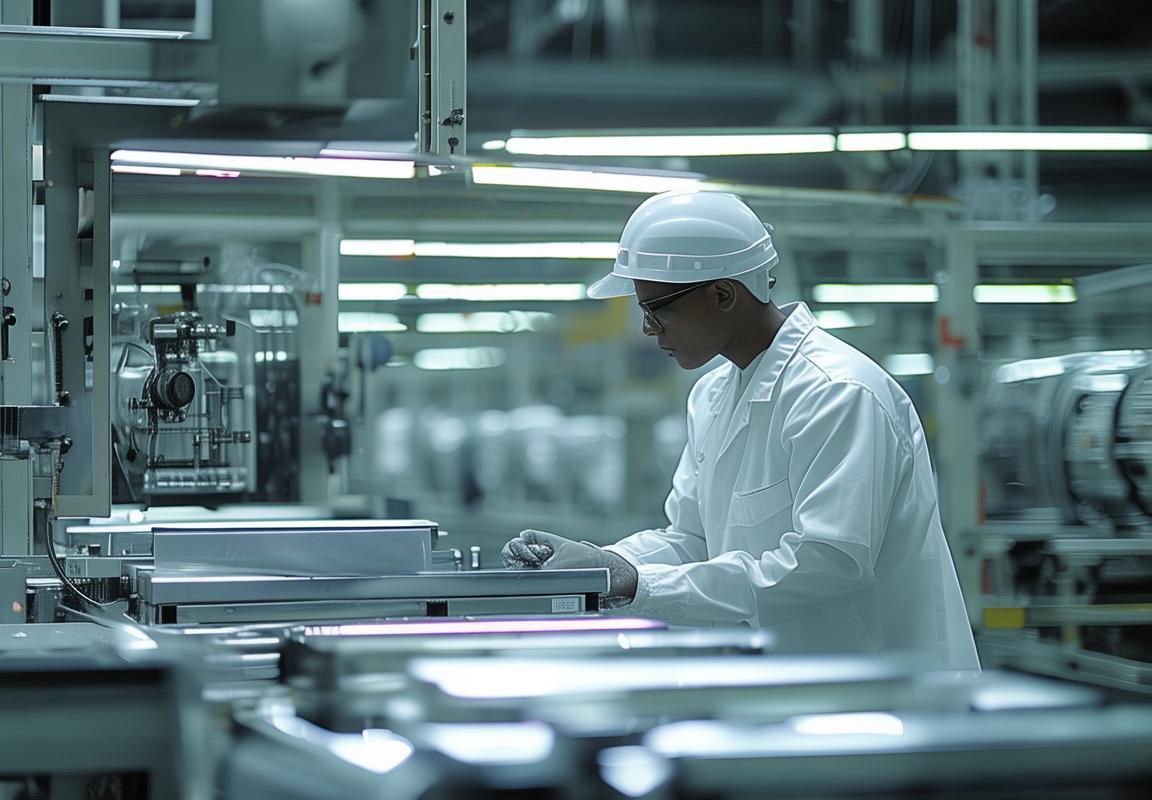
Sourcing the Best Components for Your Appliances
Navigating the complexities of sourcing the best components for your appliances is a critical aspect of ensuring both quality and performance. Here’s a deep dive into the intricacies involved:
Understanding Component SpecificationsSelecting the right components starts with a thorough understanding of the specifications required for your appliances. This involves not just the basic technical requirements but also the nuances of materials, performance metrics, and compatibility with the overall design.
Building Strong Supplier RelationshipsEstablishing strong relationships with suppliers is key. These connections allow for better negotiation, faster response times, and the ability to source components that are not only high-quality but also tailored to your specific needs.
Quality Assurance ProtocolsImplementing rigorous quality assurance protocols is non-negotiable. This means conducting thorough inspections and tests at various stages of the supply chain to ensure that every component meets the exacting standards set for your appliance line.
Material Sourcing and InnovationThe choice of materials can significantly impact the lifespan and efficiency of your appliances. Sourcing materials that are both durable and innovative can lead to products that stand out in the market. This often involves exploring new materials and technologies that offer superior performance.
Global Sourcing OpportunitiesLeveraging global sourcing opportunities can open up a world of possibilities. Different regions may offer specialized components or materials at competitive prices. This requires a strategic approach to identify the best markets for sourcing and to manage the logistics of international trade.
Supplier Evaluation and SelectionEvaluating suppliers based on a range of factors is crucial. This includes their track record, certifications, ability to meet delivery schedules, and their willingness to collaborate on custom solutions. A comprehensive supplier evaluation process ensures that you’re partnering with the right vendors.
Cost-Effective SolutionsBalancing cost and quality is a delicate dance. Finding suppliers who can offer cost-effective solutions without compromising on quality is essential. This might involve negotiating bulk purchase discounts, exploring alternative materials, or finding suppliers who specialize in high-efficiency components.
Compliance and Regulatory StandardsEnsuring that all components comply with relevant regulatory standards is vital. This includes safety standards, environmental regulations, and any industry-specific requirements. Failing to meet these standards can lead to costly recalls or legal issues.
Supply Chain ManagementEffective supply chain management is the backbone of successful component sourcing. This involves streamlining the process from order placement to delivery, minimizing lead times, and managing inventory levels to avoid stockouts or overstocking.
Long-Term PartnershipsBuilding long-term partnerships with suppliers can lead to a variety of benefits. These include preferential pricing, early access to new technologies, and the ability to collaborate on product development. Long-term relationships also foster trust and can lead to more efficient and reliable supply chains.
Continuous ImprovementThe world of technology and materials is constantly evolving. Staying abreast of these changes and continuously seeking ways to improve the components used in your appliances is essential. This might involve attending trade shows, participating in industry forums, or investing in R&D.
Risk ManagementIdentifying and managing risks associated with component sourcing is crucial. This includes supply chain disruptions, price volatility, and quality issues. Having contingency plans and alternative suppliers can mitigate these risks.
In conclusion, sourcing the best components for your appliances is a multifaceted process that requires a keen eye for detail, strategic partnerships, and a commitment to quality and innovation. By carefully navigating these aspects, you can ensure that your appliances are not only high-quality but also competitive in the market.
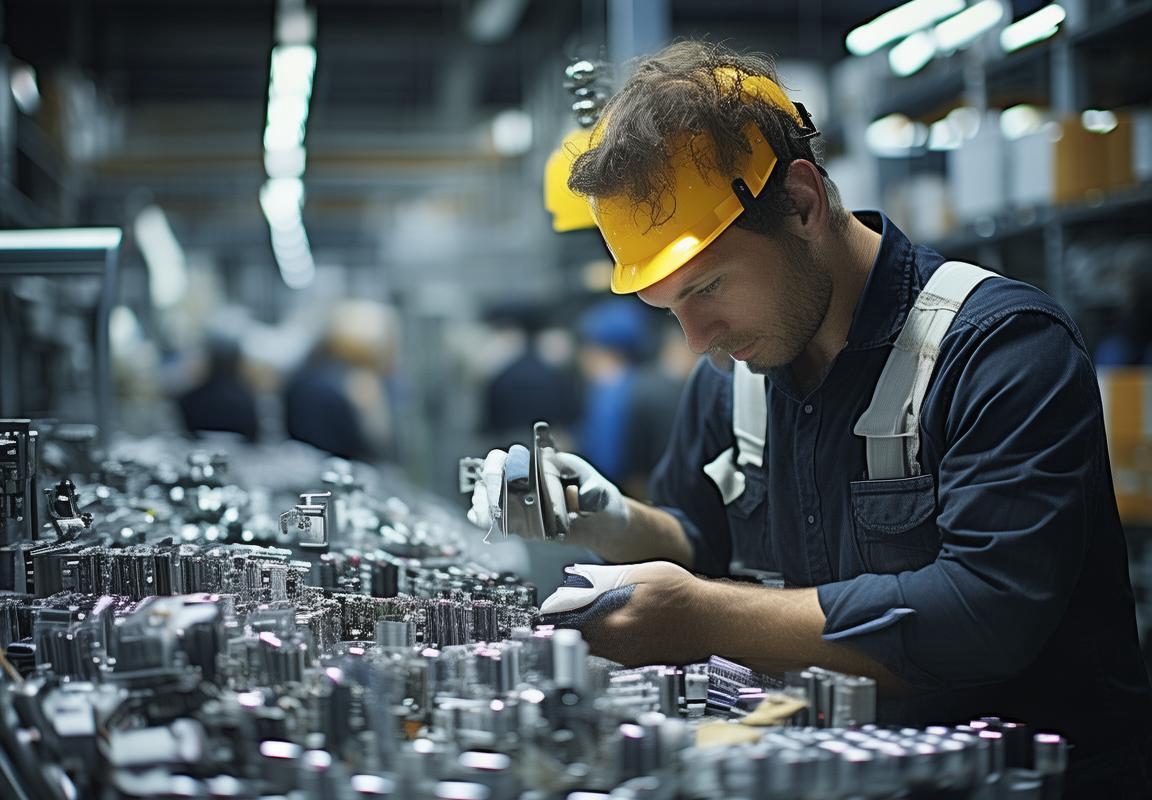
Streamlining Your Production Process
In the ever-evolving landscape of kitchen appliances manufacturing, streamlining the production process is a crucial step for OEM manufacturers to maintain efficiency and meet the demands of a competitive market. Here’s how they achieve this:
The Efficiency of AutomationAutomating certain tasks in the production line can significantly reduce human error and increase output. By integrating advanced machinery and robotics, OEMs can ensure that each appliance is produced with precision and consistency. This automation not only speeds up the manufacturing process but also allows for the creation of complex designs that would be difficult to achieve manually.
Optimizing the Supply ChainAn efficient production process begins with a well-optimized supply chain. OEM manufacturers work closely with suppliers to ensure a steady flow of high-quality components. This involves meticulous planning and coordination to minimize downtime and ensure that parts are available when needed. By streamlining the supply chain, manufacturers can reduce lead times and lower costs.
Lean Manufacturing PrinciplesAdopting lean manufacturing principles can transform a production line. This approach focuses on reducing waste and eliminating unnecessary steps. OEMs may implement just-in-time (JIT) inventory systems to keep the workspace organized and eliminate excess inventory. By focusing on value-added activities and continuously improving processes, manufacturers can enhance productivity.
Cross-Training EmployeesA skilled workforce is essential for a streamlined production process. OEM manufacturers invest in cross-training their employees to ensure that each team member can handle multiple tasks. This flexibility allows for a more agile production line, where workers can adapt to changes in the manufacturing process without disrupting the flow. Cross-training also helps in maintaining continuity even when certain individuals are on leave or transitioning to different roles.
Effective CommunicationClear communication is the backbone of a streamlined production process. OEMs foster an environment where employees feel comfortable sharing ideas and concerns. Regular meetings, open forums, and feedback loops enable the company to make timely adjustments and improvements. Effective communication also helps in coordinating tasks across different departments, ensuring that the production line runs smoothly.
Investing in Advanced TechnologyOEM manufacturers are constantly seeking ways to leverage technology to streamline their production processes. From computer-aided design (CAD) software for product development to enterprise resource planning (ERP) systems for managing resources, technology plays a vital role. By investing in cutting-edge technology, manufacturers can keep up with the latest trends and innovations, ultimately leading to a more efficient and productive line.
Regular Maintenance and UpgradesRegular maintenance of machinery and equipment is crucial to avoid unexpected downtime. OEMs schedule routine checks and upgrades to ensure that their production line is running at peak performance. This proactive approach not only extends the life of the equipment but also minimizes the risk of defects in the final product.
Implementing a Continuous Improvement CultureA culture of continuous improvement is ingrained in the DNA of an OEM manufacturer aiming to streamline its production process. This means that every employee is encouraged to identify inefficiencies and suggest improvements. By adopting a Kaizen philosophy, where even small changes can lead to significant gains over time, OEMs can create a dynamic and ever-evolving production process.
Adapting to Market ChangesThe ability to adapt to market changes is key to maintaining a streamlined production process. OEMs must stay abreast of consumer trends, regulatory requirements, and technological advancements. By being flexible and responsive, manufacturers can quickly adjust their production processes to meet new demands without sacrificing quality.
In conclusion, streamlining the production process in the OEM kitchen appliances industry is a multifaceted endeavor that requires a combination of technological innovation, lean principles, employee training, and a culture of continuous improvement. By focusing on these areas, OEM manufacturers can ensure that they are delivering high-quality products efficiently and effectively to meet the dynamic needs of their customers.

How OEM Manufacturers Support Brand Development
Navigating the complexities of brand development can be a daunting task, especially for businesses looking to establish a strong presence in the market. OEM (Original Equipment Manufacturer) kitchen appliances manufacturers play a pivotal role in this journey by providing support that goes beyond just producing products. Here’s how they contribute to the brand development process:
Understanding the Brand VisionManufacturers understand that a brand is more than just a product—it’s a story, a promise, and an emotional connection with consumers. They take the time to delve into the brand’s vision, ensuring that every appliance they produce aligns with the core values and aspirations of the brand.
Tailoring the Product RangeEvery brand has a unique identity, and OEM manufacturers recognize this. They work closely with brands to customize the product range, offering options that resonate with the target audience. This could mean designing appliances that cater to specific demographics, such as eco-friendly models for environmentally conscious consumers or high-tech features for tech-savvy buyers.
Innovation and Technology IntegrationStaying ahead of the curve is crucial in the kitchen appliances industry. OEM manufacturers are often at the forefront of technological advancements. They integrate cutting-edge features into appliances, helping brands to position themselves as innovative and forward-thinking.
Custom Packaging and BrandingPackaging is the first point of contact for many consumers. OEM manufacturers can help brands create packaging that not only protects the product but also enhances the brand’s image. From the choice of materials to the design and labeling, every aspect is crafted to reinforce the brand identity.
Marketing and Sales SupportBranding is not just about the product; it’s also about how it’s presented in the market. OEM manufacturers offer support in marketing and sales strategies, ensuring that the brand’s message is effectively communicated to potential customers. This includes assistance with promotional materials, sales brochures, and even online marketing campaigns.
Collaboration on after-sales ServiceA strong brand is one that stands by its customers. OEM manufacturers can assist in developing comprehensive after-sales service programs that reflect the brand’s commitment to quality and customer satisfaction. This can range from warranty services to customer support hotlines, all of which contribute to the brand’s reputation.
Building a Consistent Brand ExperienceConsistency is key in brand development. OEM manufacturers help ensure that every aspect of the product—from the design to the user experience—reflects the brand’s essence. This includes consistency in the quality of materials used, the functionality of the appliances, and the overall customer experience.
Global Market ExpansionFor brands looking to expand into new markets, OEM manufacturers can be invaluable allies. They have the knowledge and experience to navigate different regulatory requirements, cultural nuances, and distribution channels, allowing the brand to enter new territories with confidence.
Customized Training ProgramsA brand’s success is often dependent on the skills and knowledge of its employees. OEM manufacturers can offer customized training programs to ensure that the brand’s sales and service teams are well-equipped to represent the brand effectively.
Collaboration on Future ProductsOEM manufacturers are not just concerned with the present; they’re also thinking about the future. They collaborate with brands to anticipate market trends and develop new product lines that will keep the brand relevant and competitive.
By supporting brand development in these ways, OEM manufacturers help brands build a solid foundation that can withstand the test of time. Their expertise in design, technology, marketing, and customer service ensures that the brand’s voice is heard loud and clear in the marketplace.

The Importance of Sustainability in Kitchen Appliances
In today’s market, the significance of sustainability in kitchen appliances cannot be overstated. From the materials used to the manufacturing process and the end-of-life considerations, sustainable practices are becoming increasingly important to both consumers and manufacturers. Here’s a closer look at why sustainability matters in the kitchen appliances industry.
Materials and ResourcesSustainable kitchen appliances often prioritize the use of eco-friendly materials. This includes recycled metals, sustainable woods, and non-toxic plastics. By choosing these materials, manufacturers reduce their carbon footprint and the strain on natural resources. Additionally, using recycled materials can help lower production costs, making sustainable appliances more accessible to a wider audience.
Energy EfficiencyEnergy-efficient appliances are a cornerstone of sustainability. Modern kitchen appliances are designed to consume less energy, which not only reduces utility bills for consumers but also lessens the environmental impact. Innovations like smart technology allow appliances to optimize energy use, providing consumers with the convenience of efficient cooking and cooling while minimizing waste.
Longevity and DurabilitySustainable kitchen appliances are built to last. High-quality materials and rigorous testing ensure that these products can withstand the test of time. This not only reduces the frequency of replacements but also decreases the amount of waste generated by discarded appliances. A longer lifespan also means fewer resources are used in the production of new appliances.
Recyclability and End-of-LifeThe ability to recycle kitchen appliances at the end of their life cycle is crucial for sustainability. Appliances designed with recyclability in mind can be disassembled and their components reused or recycled. This reduces the need for new raw materials and helps to close the loop in the manufacturing process.
Reducing EmissionsThe production of kitchen appliances contributes to greenhouse gas emissions. By focusing on sustainable practices, manufacturers can significantly reduce these emissions. This includes optimizing energy use in production facilities, using renewable energy sources, and minimizing waste during the manufacturing process.
Water ConservationWater is a precious resource, and sustainable kitchen appliances are designed to conserve it. Dishwashers, for example, are engineered to use less water while still providing thorough cleaning. Refrigerators and ice makers are also designed to reduce water consumption, ensuring that appliances are not only energy-efficient but also water-wise.
Health and SafetySustainable kitchen appliances often prioritize the health and safety of the consumer. Non-toxic materials, for instance, are used to avoid harmful chemicals that could leach into food or the environment. This not only protects the consumer but also contributes to a healthier planet.
Consumer EducationManufacturers of sustainable kitchen appliances play a role in educating consumers about the importance of sustainability. By highlighting the benefits of eco-friendly appliances, they can influence consumer behavior and encourage the adoption of sustainable products.
Certifications and StandardsMany sustainable kitchen appliances carry certifications from recognized organizations, such as Energy Star or the U.S. Green Building Council’s LEED program. These certifications serve as a trust signal to consumers, assuring them that the product meets certain environmental standards.
Innovation and ResearchThe push for sustainability in kitchen appliances drives innovation and research. Manufacturers are constantly seeking new ways to improve their products’ environmental impact, from the materials used to the technology incorporated. This commitment to innovation ensures that the industry continues to evolve in a more sustainable direction.
In conclusion, the importance of sustainability in kitchen appliances is multifaceted. It encompasses the entire lifecycle of the product, from raw material sourcing to end-of-life considerations. By focusing on sustainability, manufacturers can reduce their environmental impact, offer products that are healthier for consumers, and contribute to a more sustainable future for all.
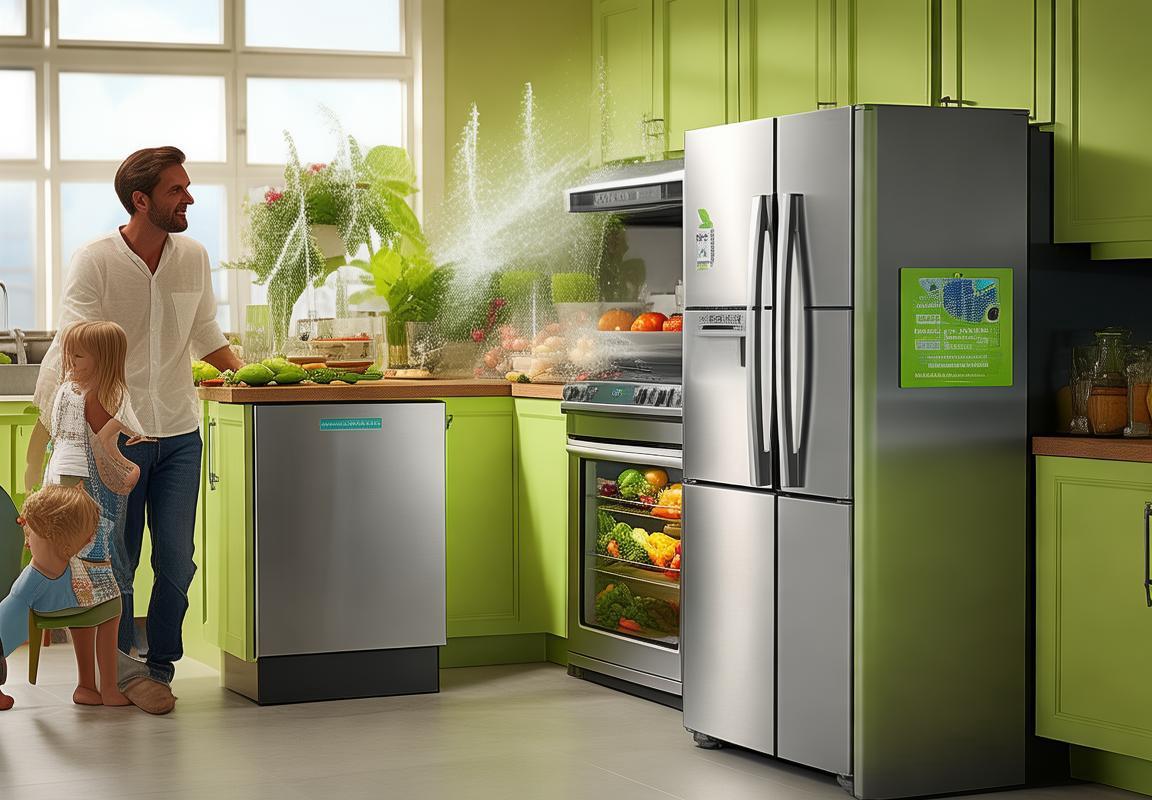
The Future of OEM in the Kitchen Appliances Market
In the ever-evolving landscape of the kitchen appliances market, OEM (Original Equipment Manufacturer) partnerships play a pivotal role. As we delve into the future, several trends and strategies are shaping the path forward for OEMs in this sector.
The integration of smart technology is set to become a cornerstone of the future OEM market. As consumers demand more connected and interactive appliances, OEMs are increasingly focusing on developing products that can seamlessly integrate with home automation systems. This shift requires not just technological innovation but also a deep understanding of user needs and preferences.
Customization will also be a key driver in the future of OEMs. With the rise of e-commerce and direct-to-consumer models, customers now have a louder voice in what they want from their appliances. OEMs that can offer a wide range of customizable options, from design to functionality, will be better positioned to meet these diverse demands.
Sustainability is not just a buzzword but a critical factor in the future of kitchen appliances. As environmental concerns grow, OEMs are under pressure to produce appliances that are energy-efficient, durable, and made from recyclable materials. This shift towards sustainability not only aligns with consumer values but also presents a unique opportunity for innovation and differentiation in the market.
Collaboration with local suppliers and manufacturers will become more prevalent. By sourcing components and services locally, OEMs can reduce their carbon footprint, support local economies, and often achieve cost savings. This trend is particularly significant in regions where there is a strong local supply chain infrastructure.
Regulatory compliance will continue to be a major challenge for OEMs. As governments around the world tighten regulations on energy efficiency, emissions, and safety, OEMs must stay abreast of these changes and adapt their products accordingly. This requires a robust regulatory compliance team and a willingness to invest in research and development to ensure ongoing compliance.
The rise of digital platforms will transform how OEMs engage with customers and manage their supply chains. From online design tools that allow customers to visualize and customize their appliances before purchase to cloud-based supply chain management systems, technology will play a crucial role in streamlining operations and enhancing customer experiences.
Globalization will remain a double-edged sword for OEMs. On one hand, it offers access to new markets and a broader customer base. On the other hand, it means navigating complex trade agreements, tariffs, and logistics. OEMs that can navigate these challenges effectively will be able to capitalize on global opportunities.
The importance of brand reputation will grow exponentially. In an era where reviews and social media influence purchasing decisions, the reputation of an OEM can make or break a product. Investing in quality, customer service, and ethical manufacturing practices will be essential for building a strong brand that consumers trust.
Lastly, the future of OEMs in the kitchen appliances market will be characterized by a relentless pursuit of innovation. From new materials to advanced manufacturing techniques, OEMs that can continually push the boundaries of what’s possible will be the ones that lead the market. This means fostering a culture of innovation within the organization, encouraging creativity, and embracing risk-taking.
In conclusion, the future of OEMs in the kitchen appliances market is one of continuous evolution. It’s a future where technology, sustainability, and customer-centricity will be at the forefront, and where those manufacturers that can adapt, innovate, and stay true to their values will thrive.
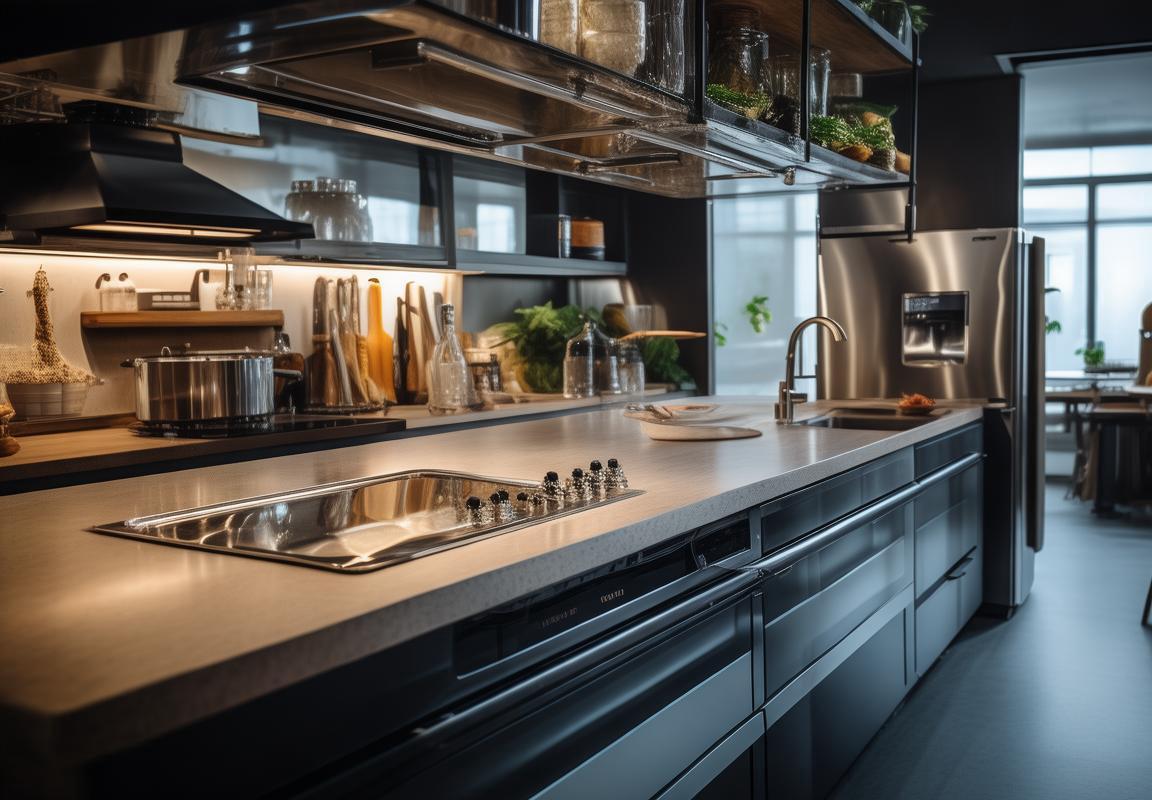
Final Thoughts on Choosing the Right OEM Partner
In the world of kitchen appliances, finding the right OEM (Original Equipment Manufacturer) partner is a pivotal decision. It’s not just about manufacturing; it’s about aligning with a company that understands your brand’s vision and can bring it to life with precision and care. Here are some final thoughts to consider when selecting the ideal OEM partner for your kitchen appliances.
Understanding the nuances of your brand’s identity is crucial. An OEM partner should be able to grasp the essence of what makes your brand unique and translate that into the design and functionality of your appliances. This alignment ensures that the final product resonates with your target market and stands out in a crowded marketplace.
Communication is key in any partnership, especially when it comes to OEM manufacturing. Regular updates, clear channels of feedback, and open dialogue are essential for a smooth collaboration. A good OEM partner will keep you in the loop throughout the production process, ensuring that any potential issues are addressed promptly and that your expectations are met.
Quality should never be compromised. An OEM manufacturer that prides itself on its work will have stringent quality control measures in place. This includes rigorous testing at various stages of production, adherence to international standards, and a commitment to using high-quality materials. Choosing an OEM partner that values quality as much as you do can significantly impact the reputation and longevity of your brand.
Flexibility is another critical factor. The kitchen appliances market is dynamic, with trends and consumer preferences changing rapidly. An OEM partner that can adapt to these changes, whether it’s through quick turnaround times or the ability to modify existing designs, can help your brand stay ahead of the curve.
Sustainability is not just a buzzword; it’s a growing expectation among consumers. An OEM manufacturer that incorporates sustainable practices into its operations can help your brand appeal to eco-conscious customers. This could involve sourcing materials from renewable sources, reducing waste, or designing appliances that are energy-efficient and long-lasting.
Cultural understanding and localization are vital, especially for brands that operate in multiple markets. An OEM partner that is sensitive to cultural nuances and can tailor products to meet the specific needs and preferences of different regions can greatly enhance your brand’s appeal and market penetration.
Long-term relationships are built on trust and reliability. When choosing an OEM partner, consider their track record and reputation. A company with a history of successful collaborations and satisfied clients is more likely to be a reliable and consistent partner.
Technology integration is a game-changer in the kitchen appliances industry. An OEM manufacturer that stays abreast of technological advancements and can incorporate smart features and connectivity into your products can give your brand a competitive edge.
Lastly, consider the cost-effectiveness of the partnership. While quality and reliability are paramount, an OEM partner that offers competitive pricing without compromising on standards can help you maintain profitability while delivering value to your customers.
In conclusion, selecting the right OEM partner for your kitchen appliances is about finding a match that complements your brand’s values, aligns with your strategic goals, and can deliver exceptional products. It’s a partnership that requires careful consideration of various factors, from quality and sustainability to flexibility and cultural sensitivity. By taking the time to evaluate potential partners thoroughly, you can ensure that your brand’s journey in the kitchen appliances market is one of success and innovation.